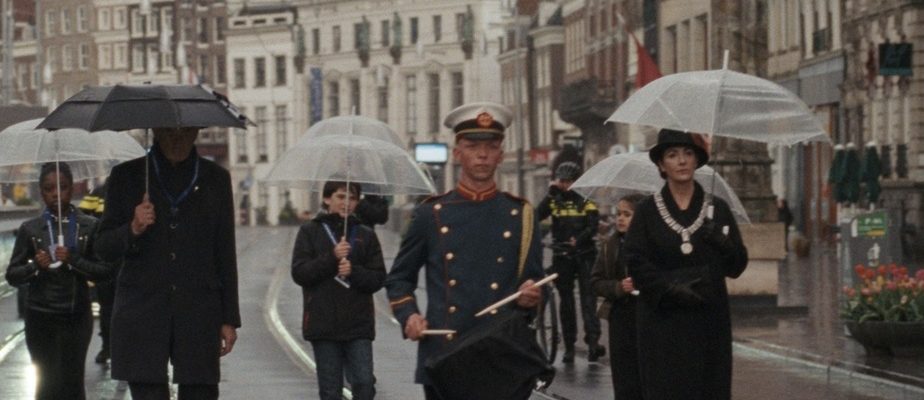Amsterdam’s past and present overlap in Occupied Cityfeature-length documentary by Steve McQueen in tribute to the Jewish population of the Dutch capital during the Nazi occupation.
Steve McQueen accustomed us to strong works of fiction, tackling harsh themes such as slavery (Twelve Years a Slave), racism (Small Ax), the conditions of detention of political prisoners (Hungry) or sex addiction (Shame). In Occupied City (A busy city in French version), the British filmmaker who has been living in the Netherlands for more than 20 years is interested in the Amsterdam victims of the Shoah.
Amsterdam is the European city whose Jewish population was most decimated during the Second World War. Some 80% of Jewish citizens who were deported to death camps did not survive. Entire neighborhoods were emptied of their inhabitants.
Adaptation by McQueen, in collaboration with his wife Bianca Stigter, of his book Atlas of an Occupied City, A busy city relates the tragic destiny of several of them in a cross-portrait between the past and the pandemic present, marked by social movements such as Black Lives Matter or the fight against global warming. At the turn of the present decade, Amsterdam experienced its first curfew since World War II.
A brilliant, poignant and powerful documentary, resembling a contemporary art installation, it is a contemplative and demanding work, if only because of its length (4h22). A busy city does not include any archives or interviews, unlike another notable documentary (9:26 a.m.) on the Holocaust, Holocaust by Claude Lanzmann.
Steve McQueen favored the superposition of facts from the past and images from the present, sometimes with an implicit interaction of people (an old lady dancing in her kitchen, the king of the Netherlands taking part in a commemoration of the Shoah , a child preparing for his bar mitzvah, etc.).
The fluid editing sometimes echoes, with images of Amsterdam today, the narration of the horrors that took place yesterday in the same places (a public square, a building, an apartment). The actress Melanie Hyams delivers in a deliberately monotone and detached tone a litany of tragedies suffered by dozens of members of the Jewish community. “Demolished,” the narrator often repeats at the end of a story, referring to a house or a person who lived there.
Steve McQueen filmed a map of horror, revisiting 130 addresses. There do not seem to be many streets in Amsterdam where there has not been a raid or a hideout like that of Anne Frank, of collaborators (Jews and others) who denounced their neighbors or, conversely, women and courageous men who risked everything to try to save their neighbor. It is especially to them that McQueen pays homage.
The repetitive, monotonous and austere aspect of his film can certainly put off the viewer from the outset. But it is precisely the length of the documentary and the effect of continuous bombardment of sordid information which creates a morbid, hypnotic, to the point of overflowing with horror. McQueen and Bianca Stigter recall the magnitude of human tragedy, as if making it their duty to tell the stories of the people whose names have been engraved on memorials to the dead. So that they are not forgotten.
A busy cityIt is presented in the original English version with French subtitles at the Cinéma du Musée on Saturday, May 4 at 5 p.m., Sunday, May 5 at 11:30 a.m. and Wednesday, May 8 at 11:45 a.m.
Check the movie schedule

Documentary
Occupied City
(VF: A busy city)
Steve McQueen
4:22 a.m.
